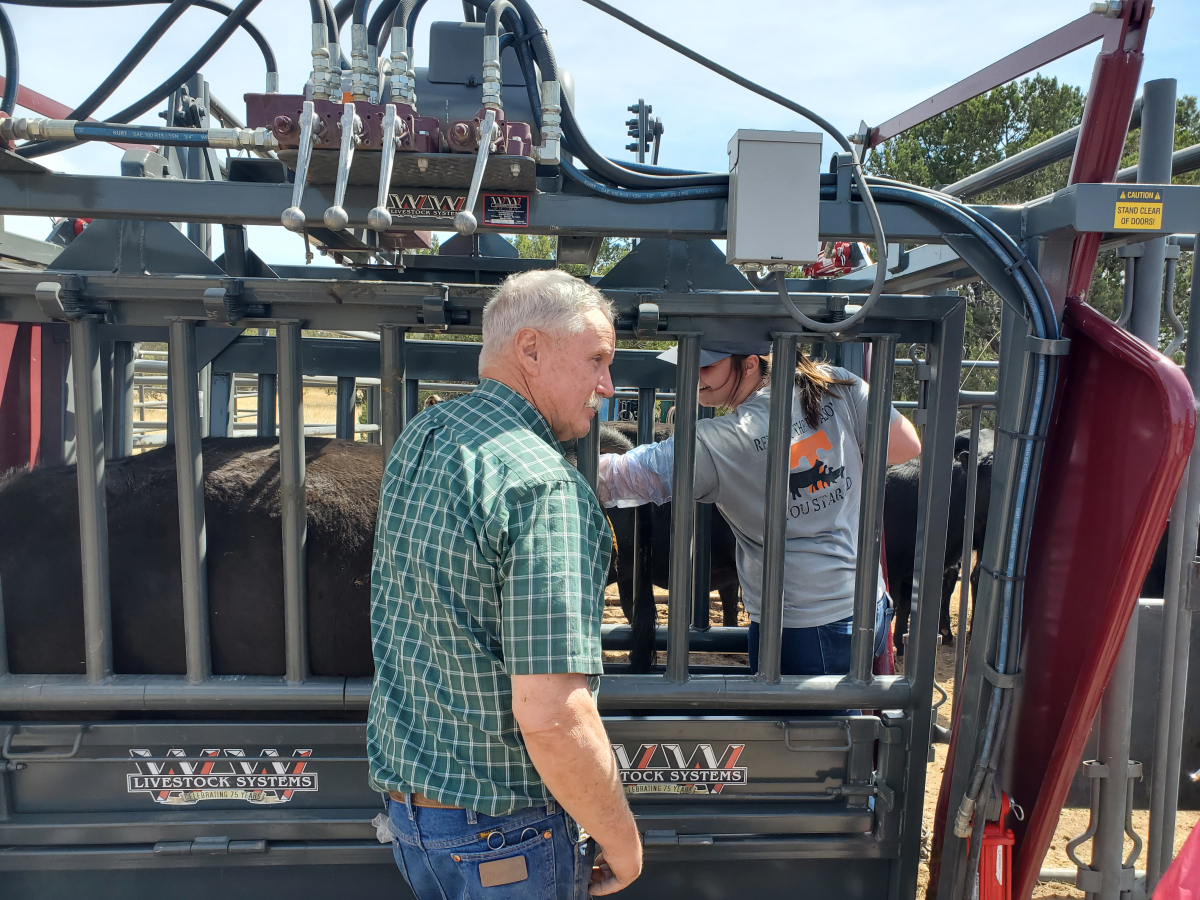

Dr. Saulo Zoca
Assistant Professor
Department of Animal Science
P: 931-486-2129
We are almost at the end of the spring breeding season and it is time to start thinking about checking those cows and heifers to identify whether they are pregnant or not. The identification of open (not pregnant) animals allows us to take proactive management decision to become more environmental and economically sustainable. Open unidentified females that stay in the herd are unproductive and increase overall cost of production as they require similar input cost without bringing a product at the end (i.e., a calf). Research have demonstrated that it takes approximately 3 to 5 calves for a beef female to pay their developmental costs. Further, those females that fail to conceive and thus fail to produce a calf in the next calving season are unlikely to recover that loss of income during their productive life. With that, pregnancy diagnosis and removal (culling) of those open females is essential for a profitable operation, where proper culling can be responsible for up to 20% of the farm’s profitability.
Not long ago, pregnancy diagnosis in cattle was performed by transrectal palpation or transrectal ultrasound almost exclusively; however, we have now different methods of pregnancy diagnosis available such as blood and milk tests. There are pros and cons of each one of these methods, but it is important to highlight that in the state of Tennessee, pregnancy diagnosis is regulated by the Tennessee Veterinary Practice Act (T.C.A. § 63-12-103(10)(A)(i)(c)) with limited exceptions (T.C.A. § 63-12-133(11)).
The traditional method of transrectal palpation allow for the manual feeling of the fetal membranes and the proper fetus, depending on the age of the pregnancy. Experienced personnel can perform with good accuracy pregnancy diagnosis as early as day 30 of gestation, and fetal age can be estimated. This technique requires great level of experience, especially for young gestational ages. Results are given at the moment the animal is palpated. Similarly, when an ultrasound is used, results are gathered at the moment of diagnosis, however, through actual visualization of the fetus. Further, experienced technicians may be able to detect pregnancy as early as day 28 post breeding. The use of ultrasound allows for technician to estimate fetal age with great accuracy, thus, an expected calving date can be estimated with precision, even when breeding records are not available. Another advantage of ultrasonography would be the possibility of reproductive tract evaluation and diagnosis of potential reproductive issues, for example ovarian cysts. More recently, the use of color doppler, an ultrasound feature, allowed some researchers to use this technique to identify pregnancy as early as day 20 post artificial insemination; however, this method detects pregnant animals by evaluating vascularization of the corpus luteum (CL), where pregnant animals have a greater degree of vascularization compared to open females instead of visualization of a proper embryo/fetus. Color doppler technique used for pregnancy diagnosis on day 20 was reported to have no false negative (i.e. females called open that were in fact pregnant); however, the percentage of false positives (i.e., females that were called pregnant but were in fact open) were approximately 13%*. Several factors may contribute for the number of false positives in this study, but one important consideration to highlight is late embryonic mortality where those females were in fact pregnant but lost their pregnancy in a later evaluation. This technique requires even more training and technician skills compared to pregnancy diagnosis that identifies a viable fetus. The negative side of transrectal palpation and transrectal ultrasonography would be the requirement for specialized labor, equipment cost and availability of these personnel.
Other techniques that can be used for pregnancy diagnosis use blood or milk proteins. These proteins are called pregnancy associated glycoproteins, commonly known as PAGs. These proteins are produced and secreted by placental cells into the maternal blood stream. Thus, when a ruminant female is pregnant these proteins can be detected in the blood and milk. There are a few companies that provide laboratory test that are commercially available, also, veterinarians and veterinary hospitals may provide this type of service. These tests have great accuracy and results are comparable to that of transrectal ultrasonography*. Recently, IDEXX released two different blood tests that can be performed on farm: Alertys Rapid Visual Pregnancy Test and Alertys OnFarm Pregnancy Test. The Alertys Rapid Visual Pregnancy Test requires minimum laboratory skills and ability to follow detailed instructions. Results are gathered within 30 minutes of blood sample analysis and rely on comparing the blood tested to a positive and a negative control, a technician would be required to distinguish between shades of blue. The most recent blood pregnancy test resembles a human pregnancy test; however, it uses blood and not urine. With this test, results can be gathered within 20 minutes of blood sample analysis. Although a great alternative to palpation and ultrasonography, the use of blood and milk tests have limitations. Pregnancy in most tests can be detected as early as day 28 post breeding with great accuracy; however, false positives can be increased if females are tested shortly after calving. To decrease the percentage of false positives cows should be tested 73 days post-partum (after calving) or greater for laboratory blood tests and greater than 95 days for the Alertys OnFarm Pregnancy Test. Pregnancy results for blood and milk test that are sent to laboratories may take 2 to 7 days or even longer to return in comparison to immediate results when palpation and ultrasonography are used, or approximately 30 minutes when the Alertys Rapid Visual Pregnancy Test and Alertys OnFarm Pregnancy Test are used.
Regardless of the method of choice, pregnancy diagnosis is an essential management for profitable and sustainable beef cattle. When identifying what method best fit your operation, one should evaluate the cost associated with each technique for their own operation as cost may vary considerably between operations due to location, labor, supplies, equipment and size of the herd. If you need assistance identifying what method would be best for your operation, you can contact your local County Extension Agent, and/or your veterinarian with who you already have your Veterinarian-Client-Patient Relationship (VCPR).
*Additional resources:
Holton et al., Luteal color doppler ultrasonography and pregnancy-associated glycoproteins as early pregnancy diagnostic tools and predictors of pregnancy loss in Bos taurus postpartum beef cows, Journal of Animal Science, V100(2) February 2022, skac018, https://doi.org/10.1093/jas/skac018
Epperson et al., Effect of progesterone supplementation in a resynchronization protocol on follicular dynamics and pregnancy success, Theriogenology, V157 November 2020, 121-129, https://doi.org/10.1016/j.theriogenology.2020.07.011